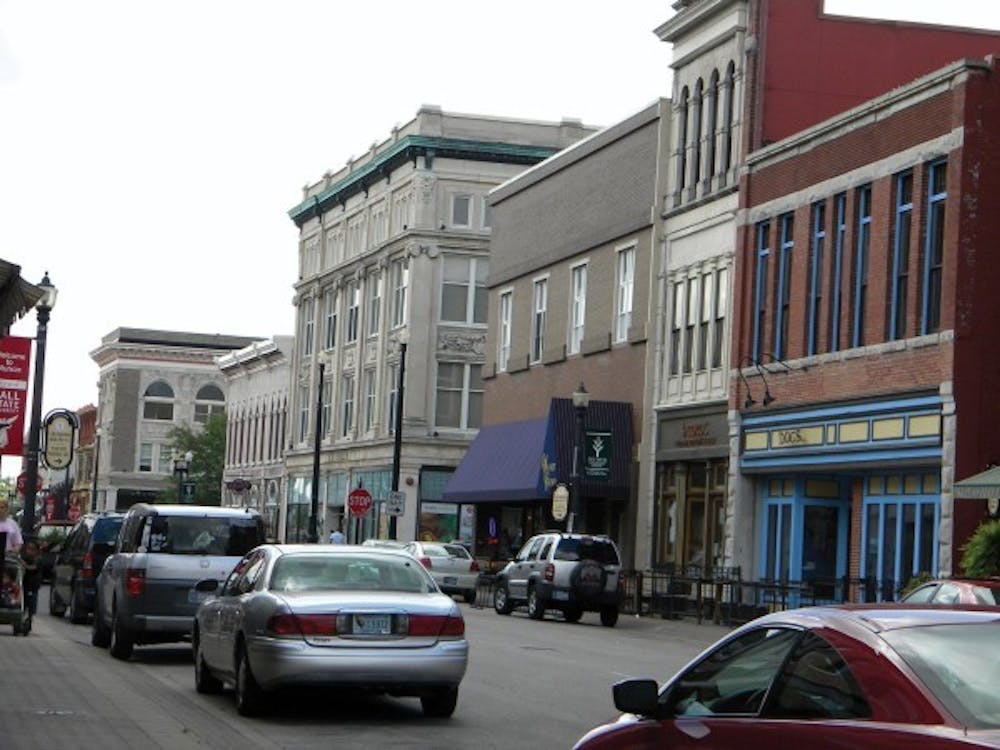In February, the Accredited Online Colleges blog ranked Muncie as the number one worst college town in America. For many Ball State students, it came as no surprise.
Although Ball State has been ranked as one of the best universities in the Midwest by the Princeton Review for the past six years, students and locals have voiced that beyond the limits of McKinley Avenue, Muncie's allure is lacking. In comparison to college-town gold mines such as Bloomington, Downtown Muncie has yet to win a popularity contest.
With the help of the community and local businesses, Cheryl Crowder, director of events for the Downtown Development Partnership, said she is determined to free Muncie of it's bad reputation with the ongoing downtown revival project.
"A clean, lively, economically stable and livable downtown is one of the signs of a healthy city," she said. "It is necessary for the heart of a city to be solid for the body to succeed. Downtowns are an indicator of community pride and quality of life."
To improve the heart of Delaware County and the quality of life for Muncie residents, the Downtown Development Partnership was created in 2001. It has made a goal to promote, maintain and enhance safety and entertainment within the central business district, Crowder said.
In the past 10 years, 64 new businesses have opened, 32 buildings have been renovated and 136 annual and one-time events have been created, Crowder said. But despite the progress, the project still faces daunting obstacles, one being the negativity the community holds towards downtown Muncie.
"Opinions of people who have never really experienced downtown Muncie and form their opinions based on someone else's speak [are a main obstacle]," she said. "You have to try for yourself."
Junior hospitality major Morgan Crouch said she has lived in the Muncie area her whole life and attended Yorktown schools growing up. Most of Crouch's memories of downtown Muncie are from her childhood, including going to the Children's Museum and on field trips in the area, she said.
As a college student now, Crouch said the downtown scene has lost its appeal for her, an issue she associates with safety and transportation.
"If Downtown was easier to get to for students, I think it would be really successful," she said. "There aren't too many places in the Village to go to, and it's difficult to drive downtown because there's no where to park.
"I feel if people heard we have a fun downtown life, more people would come to the area instead of going to surrounding cities."
Crouch said she was raised thinking to think the downtown area was unsafe.
"I honestly can't tell you the last time I've been there," she said. "I don't go there much because I was raised thinking it was a bad area. As a student, you don't hear much about downtown besides a few bars that are fun to go to."
Crowder said the perception of an unsafe, unattractive community is what she is working to diminish in Muncie.
"We have never really had a safety issue downtown, only a perception that it was unsafe because it was deserted," she said. "Activity in the downtown area is the best prevention for unsavory activities. Folks who are causing trouble like darkness. There is too much going on downtown, too many hours a day for there to be any real safety concerns."
In order to change negative perceptions of the area, the Downtown Development Partnership hopes to bring the community satisfaction by creating options. Restaurants, bars, music venues, galleries and retail experiences have been the main area of focus so far, especially within the Arts and Entertainment District located on Walnut Street.
Promotional events such as Muncie Gras, Free Friday Night Movies, First Thursday/Arts Walk and Muncie Music Fest have proven successful with an attendance of more than 250,000, Crowder said. With such high attendance rates, Crowder said she sees little reason to be anything but optimistic.
"We have kept a positive attitude throughout this process, because it is progress," she said. "Some days you see how much work there is left to do and other days you see how far we have come. Right now, things are looking up."
As a college town, Muncie is reliant on its younger population to support the surrounding city by simply attending events and creating business, Crowder said. Ball State students can help by experiencing Downtown Muncie for themselves and even volunteering.
"This is my home. Everyone who lives here, whether for their lifetime or their time at Ball State, needs something that is exceptional, special and theirs," she said. "Downtown can offer that experience, so join us for a great time.
"Just come be a part of where you live."



